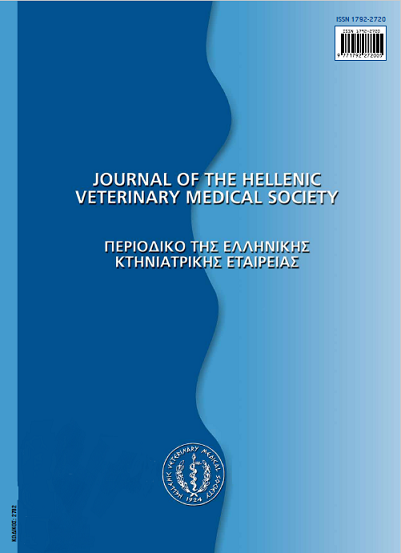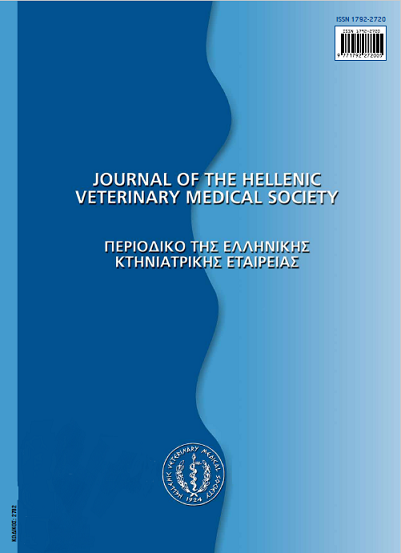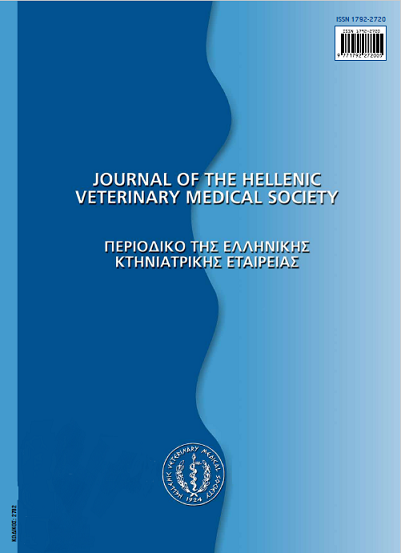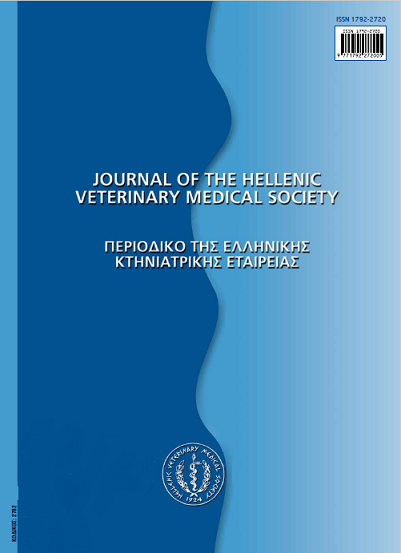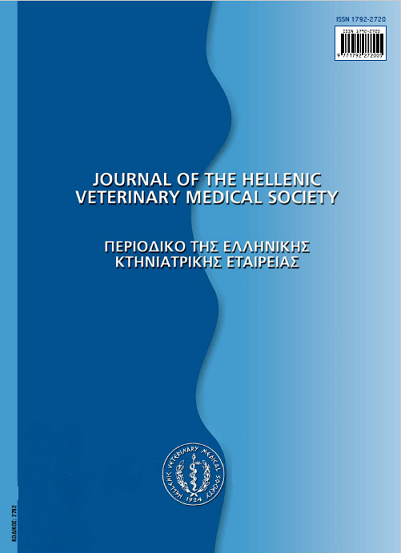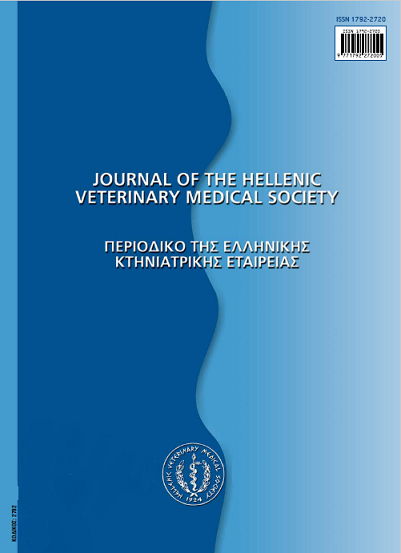Canine primary encephalopathies: a retrospective study of 48 cases (2008-2012)
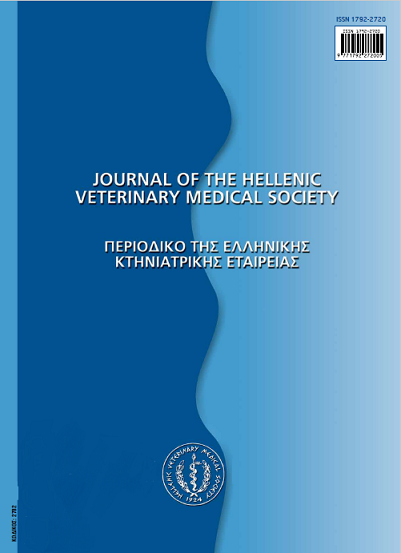
Abstract
A retrospective study was performed on 48 dogs with primary encephalopathies, admitted during a 5-year period (2008-2012). Their age ranged from 2 months to 19 years, the majority being older than 10 years. Genders were almost equally distributed and most animals were purebreds or crossbreds. Onset of neurological signs was acute (11/48), subacute (12/48) or chronic (24/48). Lesion localization was focal in 31 and multifocal in 17 dogs. The cerebrum and brainstem were the most common focal localizations, while cerebellar lesions were recorded only in 4 dogs. An aetiologic diagnosis was established in 29 dogs and included primary (8/29) or metastatic neoplasia (2/29), encephalitis of variable etiology (9/29), congenital or inherited diseases (6/29), senile cognitive dysfunction (3/29) and ischaemic encephalopathy (1/29). In the remaining 19 dogs, aetiology of intracranial dysfunction was not determined; however a tentative diagnosis was speculated in eight of these cases and included breed specific and viral encephalitis, neoplasia, ischaemic encephalopathy and inherited disease. Most dogs were euthanized due to the debilitating neurological signs (24/48) or died from complications of their illness (13/48). Six animals are still alive with symptomatic medical treatment and supportive nursing care and 5 were lost to follow up.
Article Details
- How to Cite
-
POLIZOPOULOU (Ζ.Σ. ΠΟΛΥΖΟΠΟΥΛΟΥ) Z. S., ELEKIDOU (Ε. ΕΛΕΚΙΔΟΥ) E., PATSIKAS (Μ.Ν. ΠΑΤΣΙΚΑΣ) M. N., BRELLOU (Γ. ΜΠΡΕΛΛΟΥ) G., & SOUBASIS (Ν. ΣΟΥΜΠΑΣΗΣ) N. (2017). Canine primary encephalopathies: a retrospective study of 48 cases (2008-2012). Journal of the Hellenic Veterinary Medical Society, 64(3), 183–192. https://doi.org/10.12681/jhvms.15498
- Issue
- Vol. 64 No. 3 (2013)
- Section
- Research Articles
Authors who publish with this journal agree to the following terms:
· Authors retain copyright and grant the journal right of first publication with the work simultaneously licensed under a Creative Commons Attribution Non-Commercial License that allows others to share the work with an acknowledgement of the work's authorship and initial publication in this journal.
· Authors are able to enter into separate, additional contractual arrangements for the non-exclusive distribution of the journal's published version of the work (e.g. post it to an institutional repository or publish it in a book), with an acknowledgement of its initial publication in this journal.
· Authors are permitted and encouraged to post their work online (preferably in institutional repositories or on their website) prior to and during the submission process, as it can lead to productive exchanges, as well as earlier and greater citation of published work.



